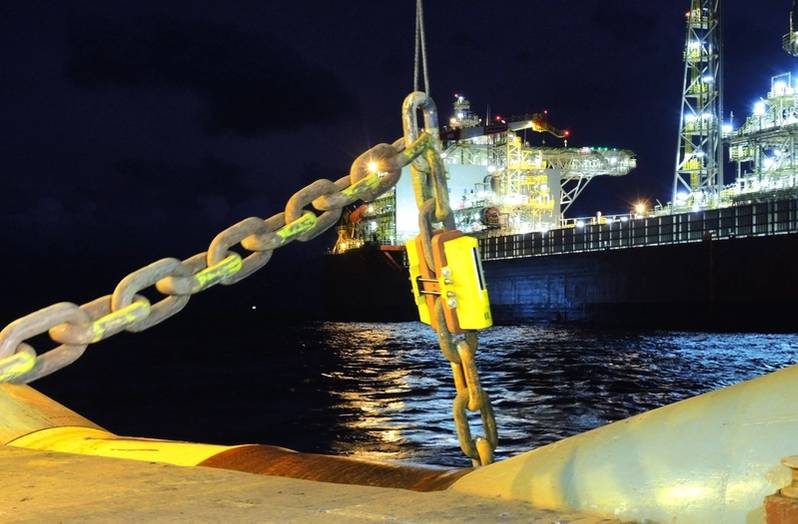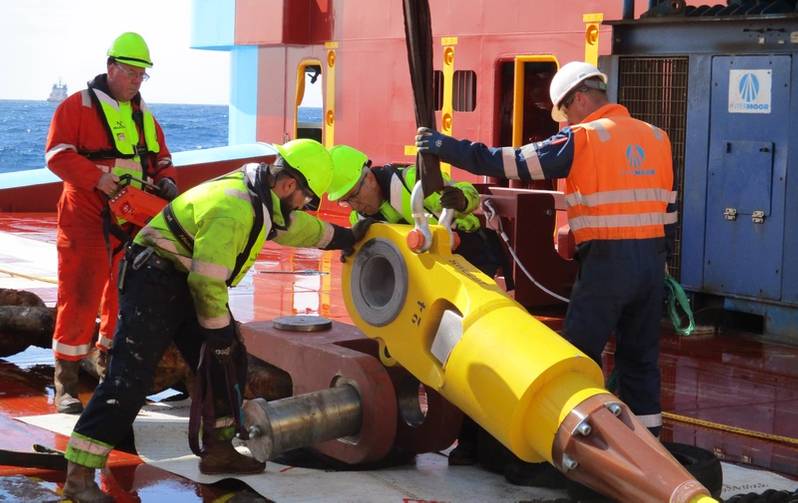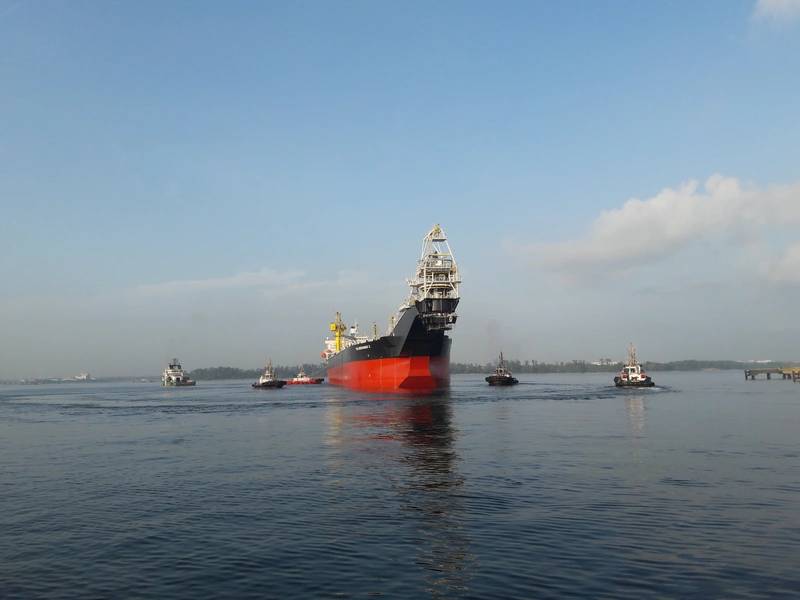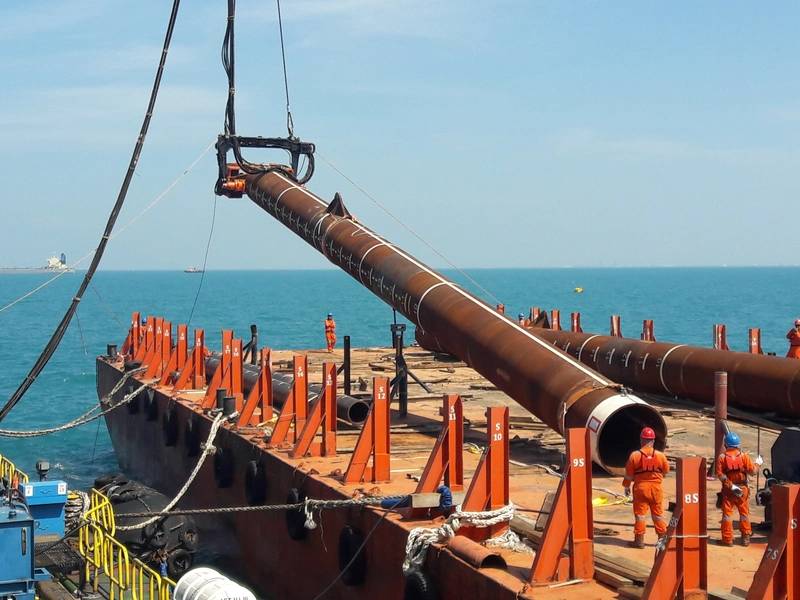
Mark Jones heads up InterMoor, part of the Acteon group of companies. The CEO weighs in on new technology developments and key markets driving growth for the mooring, foundations and subsea services firm.
What type of mooring solutions are most in demand today?
As you might expect with a global provider covering a wide variety of markets and segments, there is no “one size fits all” solution for our clients. Unlike other mooring companies, we utilize a variety of techniques to fix the mooring system to the seabed. Aside from our huge selection of drag anchors we frequently design and manufacture suction anchors or work with our sister company MENCK to design, manufacture and install driven pile anchors. Increasingly our clients request our “SEPLA” solution (Suction Embedded Plate Anchor) where we use a suction pile to install a plate anchor with extreme placement accuracy. These are becoming more popular as the amount of subsea infrastructure increases, since this technology allow us to ensure placement to exacting tolerances. Additionally, the SEPLA solution is a very cost-efficient solution compared to piles.
With projects moving towards ever deeper waters, the trend in “long” assets, chains and fiber rope is generally for the size and strength to increase as customers request higher tensions in their systems. We work with them to engineer solutions that are technically effective whilst being cost efficient to install, use and recover.
 (Photo: InterMoor)
(Photo: InterMoor)
From your point of view, what are some of the key technological advances enabling safer, more efficient and/or cost-effective mooring operations?
Reliability and safe operation of mooring systems in any sea and soil conditions are taken as a given nowadays. Our clients focus is increasingly on minimizing downtime of their floating assets, ensuring seamless and efficient operations both onshore and offshore.
Is InterMoor presently developing any new technologies that it plans to launch in the near future?
Yes, InterMoor have a pipeline of new products and services across their portfolio. Most recently we’ve launched a modern acoustic mooring line release connector (Inter-M Release) that can be triggered from the rig at the push of a button. Historically, InterMoor have used these systems to ensure rig operators can safely release and quickly move off station to avoid icebergs or tropical weather systems. Increasingly however, the release system is now specified to reduce the amount of time a rig has to stay on station waiting for its mooring system to be removed. With rig rates at $350,000-plus per day, a couple of days saving on each rig move makes a lot of sense. Our new product design incorporates learning from over 10 years of operating release systems offshore: it comes at a third of the size and a quarter of the weight of existing acoustic release mooring connectors, and yet releases at full load.
On the information technology front, our team in Norway have been developing and testing an asset management system for a number of years. The web-based system provides a platform for our onshore and offshore teams to easily identify and log asset movements in the field using RFID (radio-frequency identification) tags, thus removing the need for manual records.
It is a bit too early to release specific details at this point, but we have several innovation initiatives for new products and services that will specifically address the client demands of increased reliability and efficiency. We recently announced a nonexclusive MOU (memorandum of understanding) for global collaboration with Ocean Power Technology (OPT) to develop the use of their PowerBuoy concept and other technologies within the oil and gas and renewables markets.
 Installing a permanent mooring system on an FPSO in the North Sea (Photo: InterMoor)
Installing a permanent mooring system on an FPSO in the North Sea (Photo: InterMoor)
More and more, mooring integrity management is becoming a larger focus area for operators. What recent trends have you observed, and how do you see this area of your business evolving in the years ahead?
Definitely, although mooring systems are now very reliable and our equipment kept in good order, there is always room to improve. Having a “live” view of a mooring systems’ key parameters and performance is the starting point. Currently we utilize the iCUE Integrity Management Web Portal in cooperation with a sister company Clarus Subsea Integrity. We are working to turn this into a predictive tool which provides quantitative data about the mooring system integrity. Clarus are already providing this service for riser performance.
As the FPSO market looks to be heating up, where is InterMoor looking for opportunities?
Like most companies that are involved in offshore oil and gas, we’ve had some challenging years and difficult market conditions to carefully navigate. However, during that time we’ve stayed focused on the long term and continued to invest. Last year for instance, InterMoor acquired Viking Seatech who had capable teams, which provided entry into the Australian and Indonesian markets. In the mooring world, we now have the largest number of shore bases and the largest equipment inventory, and that certainly is a strong asset to be able to be responsive for any large project around the world. Aside from the new territories, we’ve managed to hold our shape in existing markets where many have had to pull out. In the past couple of years, we have supported multiple operators with their maintenance programs on FPSOs located in West Africa, like Erha (ExxonMobil in Nigeria), Sanha (CABGOC in Angola), Zafiro (MEGI in Equatorial Guinea) and more. So, with that experience, we’re now able to support the resurgence in FPSO activity in the markets where it is heating up like Brazil, Africa and Singapore.
 Benchamas 2 FSO being towed to field (Photo: InterMoor)
Benchamas 2 FSO being towed to field (Photo: InterMoor)
And where do you see the greatest opportunities in the decommissioning market?
As a subsidiary of Acteon, InterMoor have access to a substantial capability in the decommissioning sector. InterMoor themselves specialize in efficiently removing floating structures such as FPSOs and spars from their locations or removing umbilicals and risers from floating structures when they are no longer needed. We also have a team dedicated to suspended well abandonment using equipment provided by another sister company Claxton. We run the tools off the back of small/medium construction vessels giving operators a cost-effective method of abandoning subsea wells without the need for an expensive rig. Decommissioning is rarely an area where operators want to spend a lot of money, and it’s important to be able to bring more economical solutions to this market.
Is the emerging floating wind market a target for InterMoor? If so, how is the company preparing to compete in this sector?
Absolutely, it’s exciting times at the moment in this sector as operators move towards much larger scale projects with bigger turbines and infrastructure. InterMoor offer a fully integrated service for the design, construction and installation. Again, our clients value the fact that InterMoor can not only provide an optimized mooring solution but can bring in other partners from Acteon to support on adjacent scopes of work such as survey (UTEC), soil/ground characteristics (UTEC Geomarine), driven piles (MENCK), drilled piles (LDD). We can also provide vessels and work with providers around the globe. As such, the mooring industry has a lot to offer to the renewables industry: years of experience have allowed us to build a solid track record in a variety of soils, water depths and ocean conditions, and we are able to adapt our knowledge to the floating wind market.
 Upending of anchor pile for an offshore project in Indonesia (Photo: InterMoor)
Upending of anchor pile for an offshore project in Indonesia (Photo: InterMoor)
Mark Jones is CEO for the global InterMoor business. Since joining Acteon in January 2014 as a Vice President, he has worked alongside a number of Acteon companies including InterAct, Aquatic and InterMoor. Jones brings with him over 25 years of relevant experience in the subsea oil and gas sector across a wide variety of organizational structures. While he has a technical background, his focus is always around understanding the commercial value proposition in the eyes of the client. Prior to joining Acteon, Jones was the CEO of Expro's Connectors and Measurements division. He led the sale and subsequent integration of the businesses to Siemens in 2012, where he was Head of Strategy and Business Development.